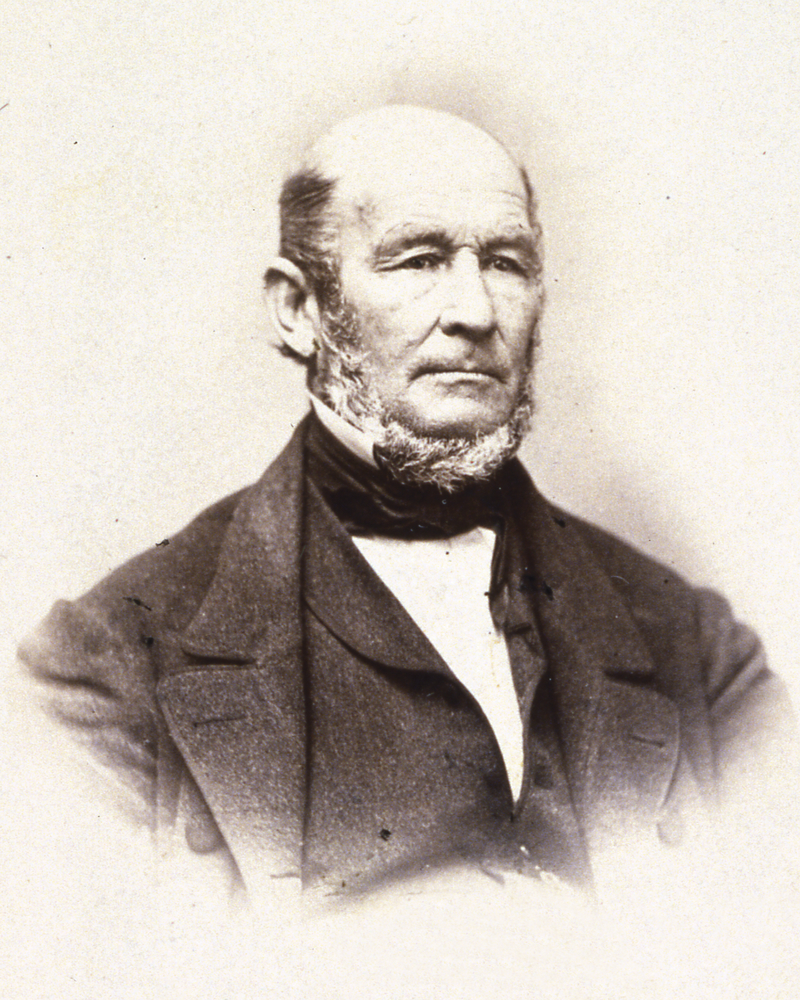|
Heber Chase Kimball was perhaps early Mormondom's most colorful leader, third in stature after Joseph Smith and Brigham Young, a most dedicated though reluctant polygamist, and an uninhibited preacher. Few other Mormon leaders exceeded his total devotion to Mormonism. For more than thirty-six years, in ten states and in England, he faithfully served his God and his people and strove to build both the spiritual and material kingdoms. From his acceptance of the new faith in 1832 until his death in 1868, he was in the forefront of the excitement, drama, and turbulence of Mormon history.
Born in Sheldon Township, Vermont, on 14 June 1801, he moved in 1811 to West Bloomfield, New York, where he eventually became a potter and blacksmith. In 1820 he moved to nearby Mendon, where he carried out his trade, became a Mason, married Vilate Murray on 7 November 1822, met his lifelong friend Brigham Young, and joined the local Baptist congregation in 1831.
Later that same year, Kimball first heard Mormon missionaries preach; he was baptized 16 April 1832 and moved his family to Kirtland, Ohio--the headquarters of the new church. He subsequently went on eight missions between 1832 and 1841, including two to England (in 1837 he became the "First Mormon in the Old World"), participated in the Zion's Camp march of 1834, became a member of the First Quorum of Twelve Apostles in 1835, followed Joseph Smith to Missouri in 1838 and to Illinois in 1839, went west with the pioneers in 1846-47, crossing the plains three times. In 1847 he became First Counselor to Brigham Young, who had succeeded Smith as president of the church.
Kimball married forty-three wives and had sixty-five children and at least 300 grandchildren. In Utah he amassed land, cattle, and property, and was worth more than $100,000 at the time of his death. From 1848 until the time of his death twenty years later he participated fully in the political, economic, social, and cultural development of Mormondom's New Zion. He became chief justice of the unofficial state of Deseret in 1849, served in the territorial legislature from 1851 to 1858, generally presided over all temple work, assisted in colonizing the region, and fostered the area's economic independence.
During his last four years the church and the territory continued to grow and develop, but his greatest contributions to both were behind him. His brusque, undiplomatic, and unsophisticated ways were no longer in style as Utah became increasingly less isolated from mainstream American life. He lived long enough to endure what he considered to be a maneuvering to reduce his influence. He died on 21 June 1868 from a subdural hematoma occasioned by being thrown from his wagon by a lunging horse.
See: Stanley B. Kimball, Heber C. Kimball: Mormon Patriarch and Pioneer (1981); and Orson F. Whitney, Life of Heber C. Kimball (1888).
|


